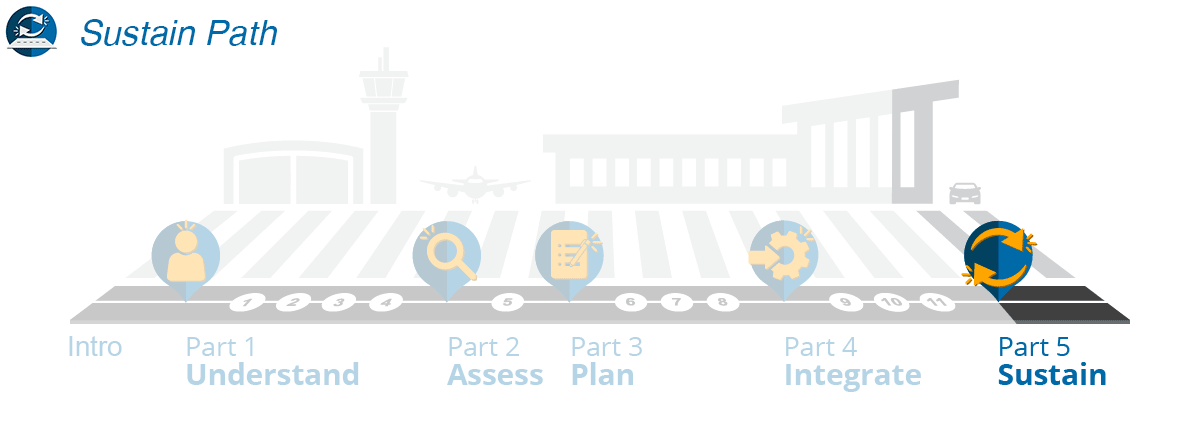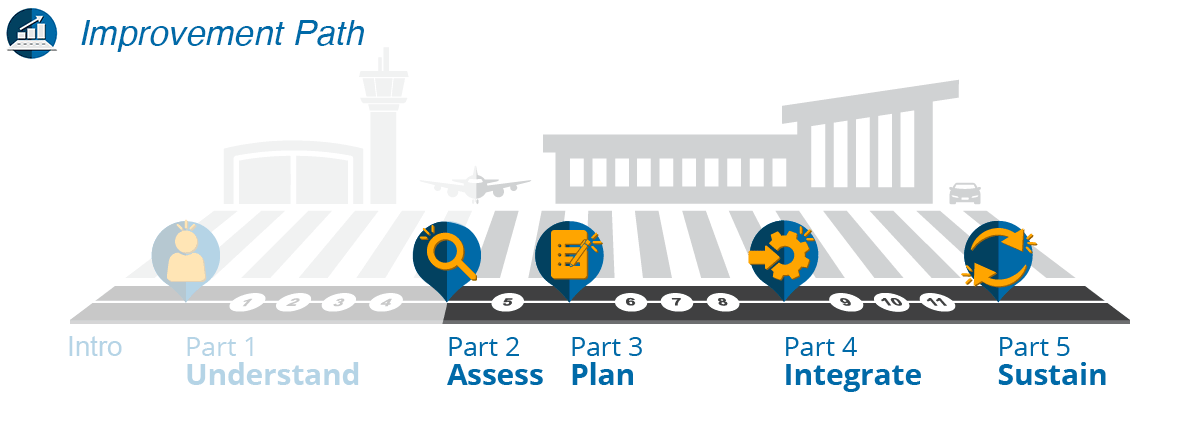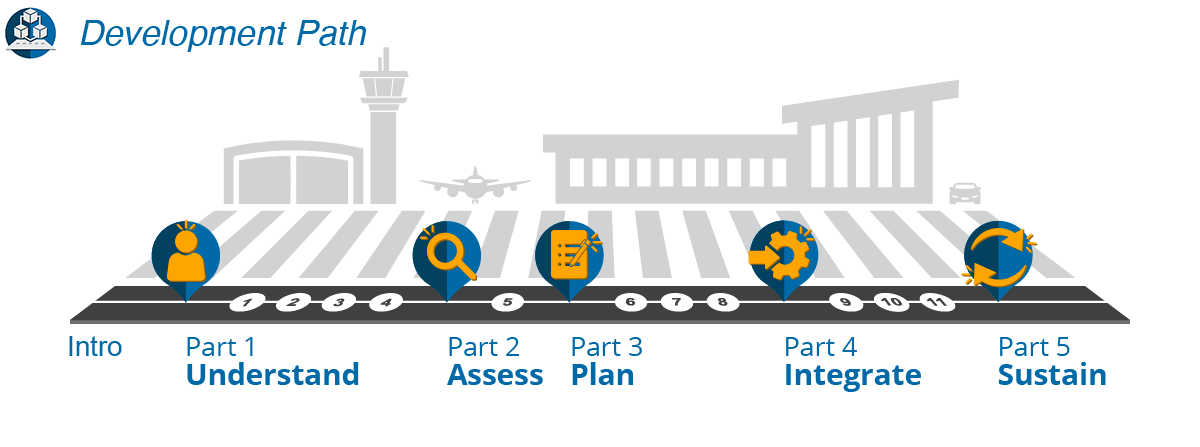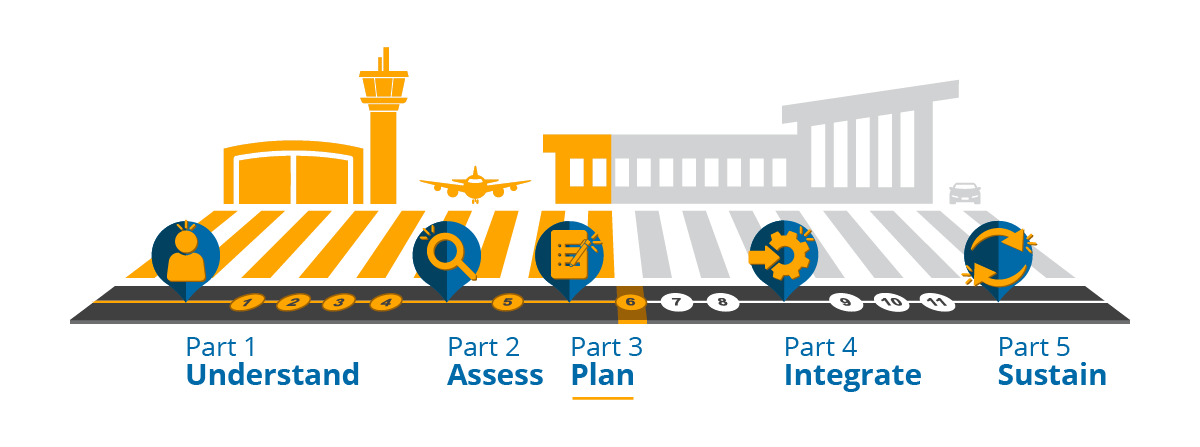
Step 6: Define Your Stakeholders
Airport Community
Building the SMEM community for your program means bringing together a number of stakeholders working collaboratively to achieve common objectives. The first group you need to define is your airport community. You will already have a good sense of these stakeholders; in fact, some if not all are probably already in your plans. Assess your list to ensure you have proper representation and to verify you have the right point of contact for gathering and sharing SM information.
Identifying Your Community
Generally, the airport community consists of the entities shown in Figure 6.2.
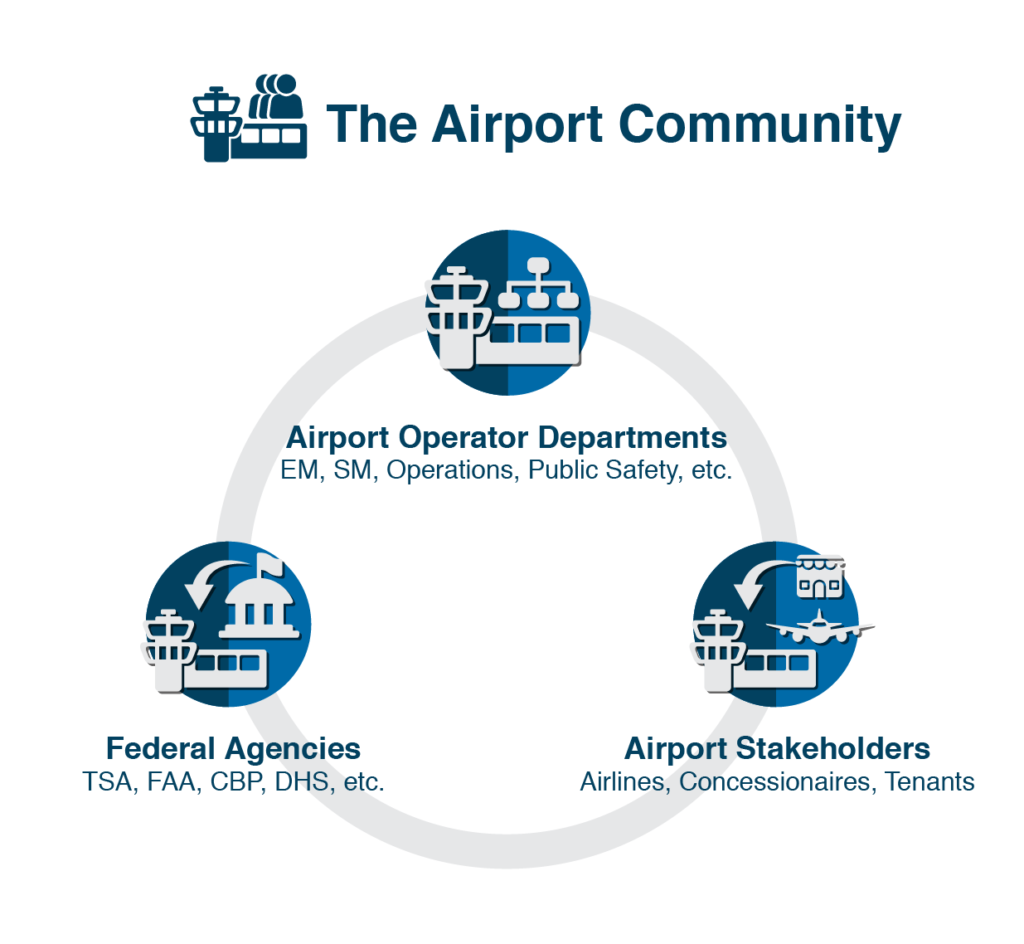
Figure 6.2: The Airport Community
- Airport Operator Departments
- Emergency Management
- Public Affairs/Social Media
- Operations and Maintenance
- Public Safety
- Administrative (Finance, Information Technology, Risk, Human Resources, etc.)
- On-site Federal Agencies—Federal Aviation Administration (FAA), Transportation Security Administration (TSA), Customs and Border Control (CBP), etc.
- Other airport stakeholders such as
- Airlines/Aircraft Operators
- Tenants and Concessionaires
- Fixed Based Operators
- Key Contractors and Vendors
Each of these entities has some role to play in EM and crisis communications. Therefore, each should be part of the planning process to identify their role within the SMEM program.
Building Your Team
As you build your team, you need a representative from your stakeholders' SM staff as well as from the operations group. Depending on the size and SM maturity of your stakeholders, they may have dedicated SM personnel who manage their social communications from corporate headquarters or remote locations. This is especially true for federal agencies, airlines, and larger corporate tenants. Most importantly, you are looking for those with whom you will be engaging directly during an incident. As you continue building this planning team, you may benefit from breaking into smaller groups for developing various aspects of the plan such as objectives, reporting, and metrics.
Building Your Team: Engaging Your Airlines
You may find it particularly difficult to engage your airline partners. Airlines tend to have well-structured and sophisticated SM programs that have responsibilities across multiple airports, both domestic and international. Engaging with a single airport may not be as high a priority for them. Even during the development of this WebResource, the research team found it challenging to identify points of contact and get a commitment to join research discussions.
As you connect with your airlines, keep in mind that one of their greatest concerns is providing accurate information. This gives you the opportunity to show them the value in staying connected with airports during a crisis: it is a good way to have the most accurate information possible, as noted in the Southwest Airlines case study. However, airlines may find it difficult to maintain contacts at every airport they service. We recommend you initiate contact with these partners by providing your contact information and inviting them to participate. During interviews for this research project, airline representatives stated that a good place to start is with their pressroom webpage. In our Resources tab, we provide a worksheet for you to build your collection of federal and airline stakeholder newsrooms.
Building Your Team: Engaging Your First Responders
Including first responders in the planning stage is critical since they are key consumers of SM information and provide the emergency operations center with critical updates to inform the public. However, during our research, the research team came across many first responders who did not fully understand the benefits of SM, especially during life/safety operations. For example, some first responders did not understand the value SM brings to situational awareness and how they could use SM to reach those involved in an incident. If you find this to be the case at your airport, take the time to build and foster the relationship with your responders and seek to demonstrate the benefits they will realize through SMEM. As with any stakeholder, if your responders do not recognize benefit from the partnership, you will struggle to sustain it.
Consult the Supplemental Reading sources in the Resources tab for more information on identifying and engaging stakeholders.
As you build or expand your SMEM program, ensure that all members are confident in your understanding of the risks of SM integration. Beyond risks to brand/reputation, there is also risk in areas such as cybersecurity, privacy issues, and misinformation. See Step 7 for a full discussion on SM risks. As you do this, be prepared to address these concerns and work with your stakeholders to develop a plan to mitigate those risks.
Tip
Host and facilitate a meeting of airport departments and partners (from SM, EM, and response disciplines) to present the findings of this research and to discuss the benefits that SM integration into EM can provide to your airport.
